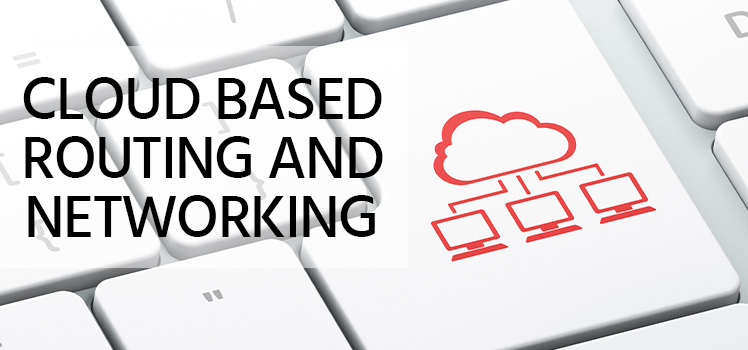Guess What? The Cloud Isn’t Perfect
A Mass Migration is Happening
A few years ago, Gartner predicted that more than $1 trillion in IT spending would be directly impacted by the shift to cloud and that 25% of all software spending would shift to the cloud. They stated that by 2020, a corporate “no-cloud” policy will be as rare as a “no-internet” policy is today. This is clearly coming to fruition, I’m sure you would agree.
A Corporate “no-cloud” policy will be as rare as a “no-internet” policy.
There are a number of reasons for this. Due to the intense global competitiveness of today’s global markets, companies must leverage their IT teams to find innovative ways to shorten the time-to-value of new services and applications. This transformation is also being driven by users as well the consumerization of IT. But today’s mass migration to the cloud isn’t without its challenges.
Legacy On-Premise Takes a Beating
When we examine the manner in which applications were deployed in the previous decades, it should be no surprise that the cloud is now dominating the IT landscape. The process of deploying a new application in the past has been slow, cumbersome and expensive. Using a fictitious example, if the marketing department came to IT about a new application, the deployment process went something like this:
- Server admins discussed what type of server infrastructure would be necessary to host the application based on utilization and other factors
- The required hardware was ordered from a vendor
- Once delivered, the hardware would be unpacked, racked and then configured
- Software developers and database admins would then finally take over and create the code for the application
- Clients and users would then be trained as to how to access the application and use its interface
As a result, the deployment process for the new application took months and as a result, there is a good chance that the marketing department may have lost an opportunity that would have benefited the company.
The initial deployment process was only the beginning however. IT personnel would be required to support the underlying hardware infrastructure by updating firmware and keeping the designated operating systems patched. Time-consuming migrations would be required at some point due to the underlying hardware-reaching end-of-life or resource demand would exceed existing capacity.
The entire process proved very costly, requiring substantial upfront investment for the initial hardware. The organizations IT talent spent their day consumed with the mundane tasks of supporting it all rather than utilize their time and knowledgebase on value added projects.
Cloud to the Rescue?
Cloud is all about speed, agility, elasticity and cost savings. It is about extreme flexibility, especially when you consider subscription-based models, many of which even bill by the second. No doubt it is enticing.
- The transition from a fixed cost structure to a variable cost model in which organizations only pay for resources used rather than paying for overprovisioned internal infrastructures provides significant cost savings in CAPEX.
- Users can access cloud-based applications from anywhere in the world, simplifying application use for employees off premise and increasing collaboration across national and global offices.
- No longer are your applications limited to the physical infrastructure within your datacenter. The cloud provides near limitless scalability for your applications as new resources can be deployed in mere minutes, rather than weeks or months as was required in the past.
- Cloud based applications are often browser based, making adaptation simple, standard and speedy for both employees and customers who are accustomed to working with the web GUI interface already within their personal applications. This also makes your applications vendor neutral as they can run on any device or operating system that hosts a supported web browser.
- By moving your applications to the cloud, you also transfer the responsibility of supporting and maintaining the underlying infrastructure for those applications. Once deployed, these servers can be out of sight and out of mind of your IT staff, allowing them to focus their time and efforts on strategic projects that bring direct value to the organization. In the case of Software as a Service, users will always have access to the most up-to-date application version and release.
By using the cloud to deliver as your primary deployment mechanism for your applications, marketing can have developers coding the new application within hours upon making the initial request to IT. This is but one example of how cloud computing allows companies to instantly respond to new opportunities or disruptions as well as unforeseen demand peak in usage.
Cloud is far from Perfect
There is an incorrect assumption that by moving everything to the cloud, IT problems will completely disappear. This couldn’t be farther from the truth. In our article 4 Cloud Gotchas to Avoid, we address four key assumptions:
- Availability – Moving applications to the cloud does NOT mean unprecedented availability.
- Security – Moving applications to the cloud does NOT increase security.
- Performance – Moving applications to the cloud does NOT mean they will perform better than they did on-prem or at the data center.
- Integration – When applications are in the cloud, on-prem, in a data center or in multiple-clouds, interconnecting them becomes quite a challenge.
Here at Total Uptime we speak to customers on a daily basis who made these assumptions and then had to retroactively make a few corrections. If organizations consider the ramifications prior to making the move and implement an Enhanced Internet Delivery platform (like ours, of course), migrations will be significantly easier, and greater control will result in the end.
Imperfection is OK
The benefits of utilizing the cloud to deliver your enterprise applications goes far beyond the actual deployment process. Clearly there are management benefits as well, and despite its faults, there are still many benefits to outweigh the drawbacks.
With the right tools in front of your favorite cloud provider(s), on-prem or datacenter infrastructure, unprecedented availability, performance and security of your applications is easily attainable. But simply moving to the cloud doesn’t solve any problems. In fact, moving to the cloud without pre-thinking how you will control your multi-cloud or hybrid-cloud infrastructure might result in more headaches than you can imagine.
Cloud Benefits for Everyone
Even the smallest of organizations can now afford the luxury of high availability that in the past was only obtainable to the largest of enterprises. High availability means having the ability to avoid costly downtime and offer an optimal user experience to everyone. Solutions are available today that allow you to not only fail over or load balance multiple servers or apps at one or more cloud providers, but send traffic to devices in different geographical regions to deliver a better experience for users.
Even though you may not host the actual supporting infrastructure any longer, with solutions like that offered by Total Uptime, you can still retain total control of your application traffic, directing it from one cloud to another when performance or availability suffer.
 New feature: DNS Change Alerting
New feature: DNS Change Alerting  Notable Network and Cloud Outages of 2021
Notable Network and Cloud Outages of 2021  Anycast Hosting Made Easy
Anycast Hosting Made Easy 


